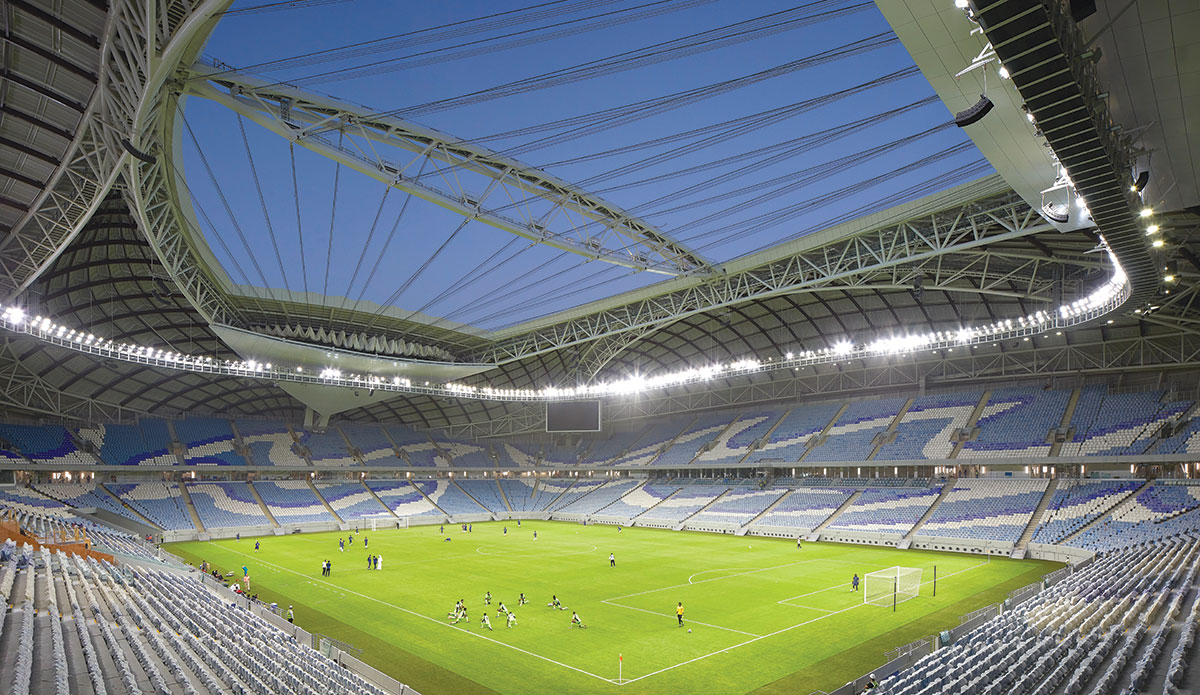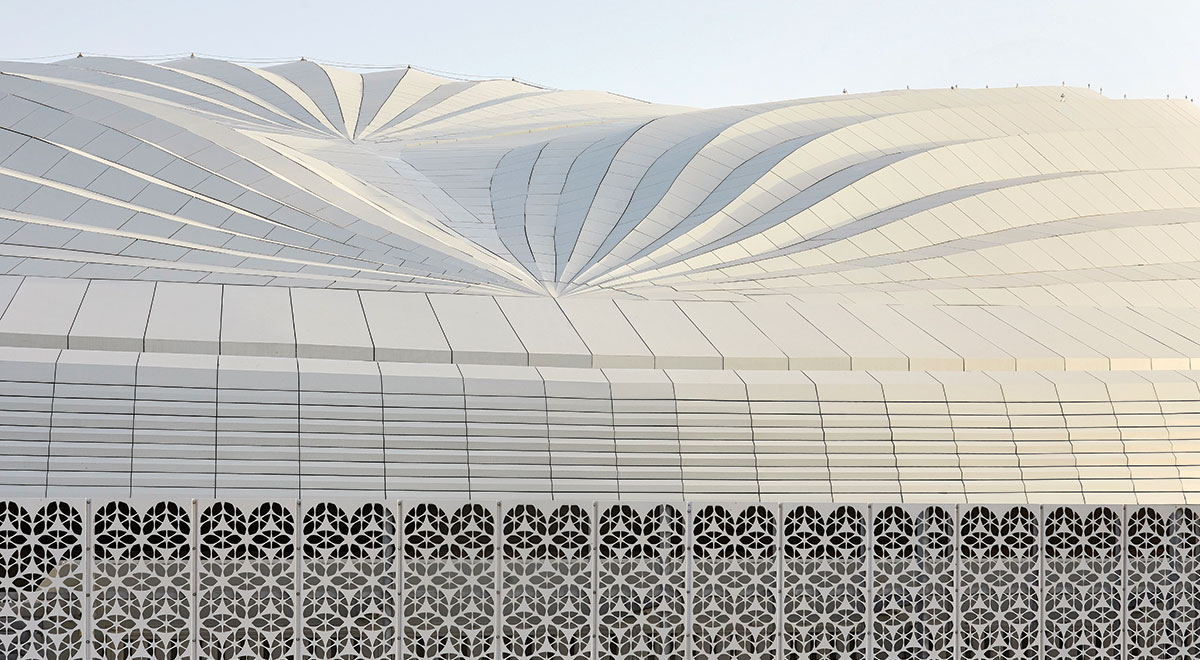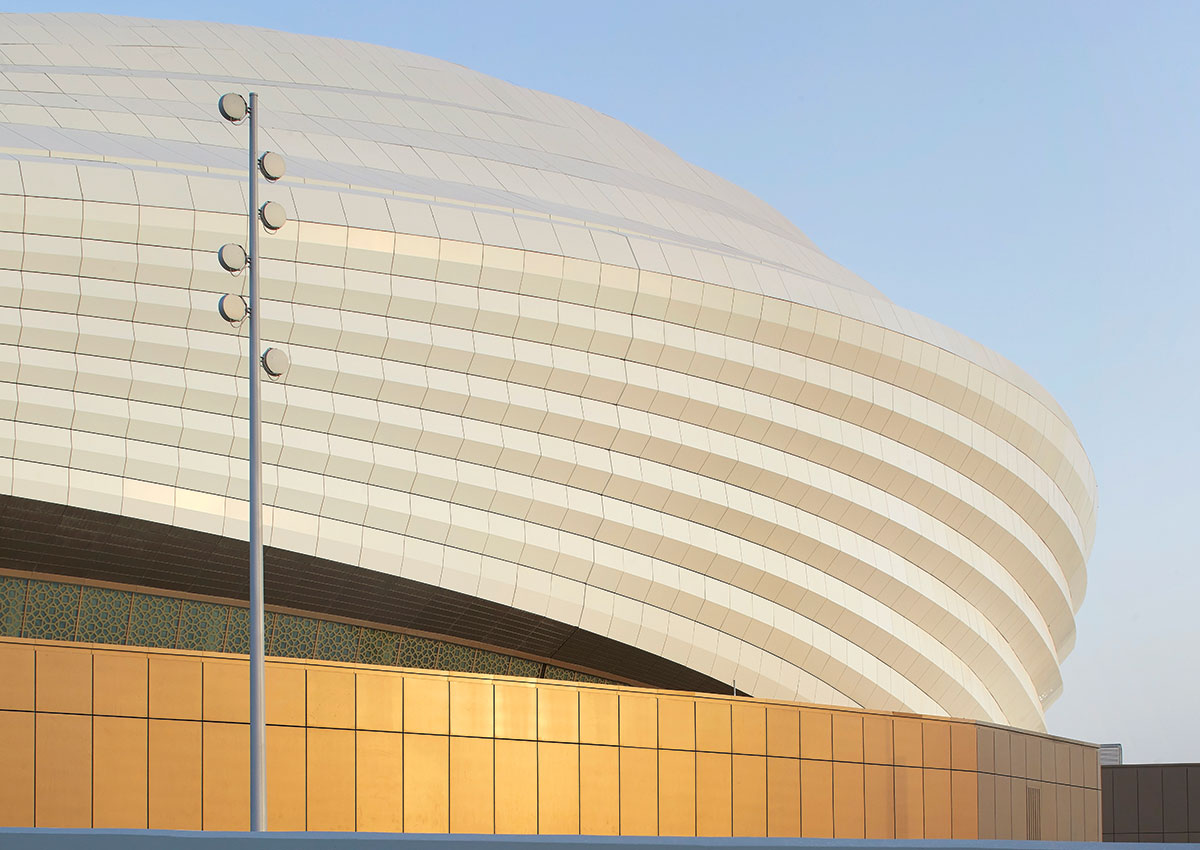Client: Supreme Committee for Delivery and Legacy of the 2022 FIFA World Cup Qatar™
Architect & Lead Designer: Zaha Hadid Architects
Design: Zaha Hadid, Patrik Schumacher
Project Director: Jim Heverin
Project Associate / Project Architect: Johannes Hoffmann
Lead Consultant: Aecom
Operable Roof Design: Schlaich Bergermann Partner

Inaugurated on 16 May 2019 by hosting the Amir Cup Final of the Qatar Stars national football league, Al Janoub Stadium was the first new stadium commissioned for the 2022 FIFA World Cup in Qatar. Zaha Hadid Architects together with Aecom began designing the stadium along with its new precinct in the city in March 2013. It is located in the city of Al Wakrah which is 23km south of Doha and connected to the capital via the Red Line of new Doha Metro system.
The 40,000-seat stadium for the 2022 World Cup can be reduced to its original 20,000-seat capacity, and the temporary seats have been designed to be demountable and transportable to a developing country in need of sporting infrastructure, post the tournament. Temporary accommodation has also been built as an overlay outside the permanent footprint and enclosure of the stadium.

The stadium has an operable roof designed by Schlaich Bergermann Partner and a seating bowl cooling system. The roof has been designed in sync with the cladding using pleated PTFE fabric and cables. The roof operates like a sail to cover the oculus above the field of play and creates a sheltered environment during summers. Passive design principles along with computer modelling and wind tunnel tests were used to maximise the effectiveness of the physical enclosure.
The design incorporates cultural references such as maritime traditions and history of the location, in particular, the traditional boat of the region, the dhow, as abstracts and combines them with practical responses to the climate, context and functional requirements. The stadium’s roof design is an abstraction of the hulls of dhows turned upside-down and huddled together to provide shade and shelter. This is expressed in the stadium’s envelope geometry, details and selected materiality, including the roof’s beam structure that echoes the interior structure of a dhow’s hull.
The facades are slanted outwards, tapered in elevation and reminiscent of the pleating of a dhow’s sails. The large overhang of the stadium’s eaves incorporates strips of metal cladding reminiscent of the timber structures used in a dhow. The opaque roof and wall areas are expressed as pleated cross sections. This feature, which has its origins in Arabic motifs and calligraphy, adds texture to the outer shell and emphasizes the stadium’s unique geometry. The external cladding materials are selected from a limited palette of materials and choice of colours; namely white for the roof and wall cladding, and darker colours for the areas below the eaves, including the lower level curtain walling with its ornamental lattice screen print that provide shading.

The stadium sits on a large landscaped podium that takes visitors from grade to the entry level main entry concourse located at the middle of the seating bowl’s tiers. This podium connects the stadium into the adjacent landscape and reduces its scale. Large parabolic voids within the podium signify different activity zones. On the eastern side, voids allow for the majority of spectators to arrive and depart from the stadium. The north eastern void will include a community market whilst the south eastern void hosts an activity park. To the west, the parabolic void within the podium allows for vehicle access and drop off at grade for the players, officials and dignitaries.















